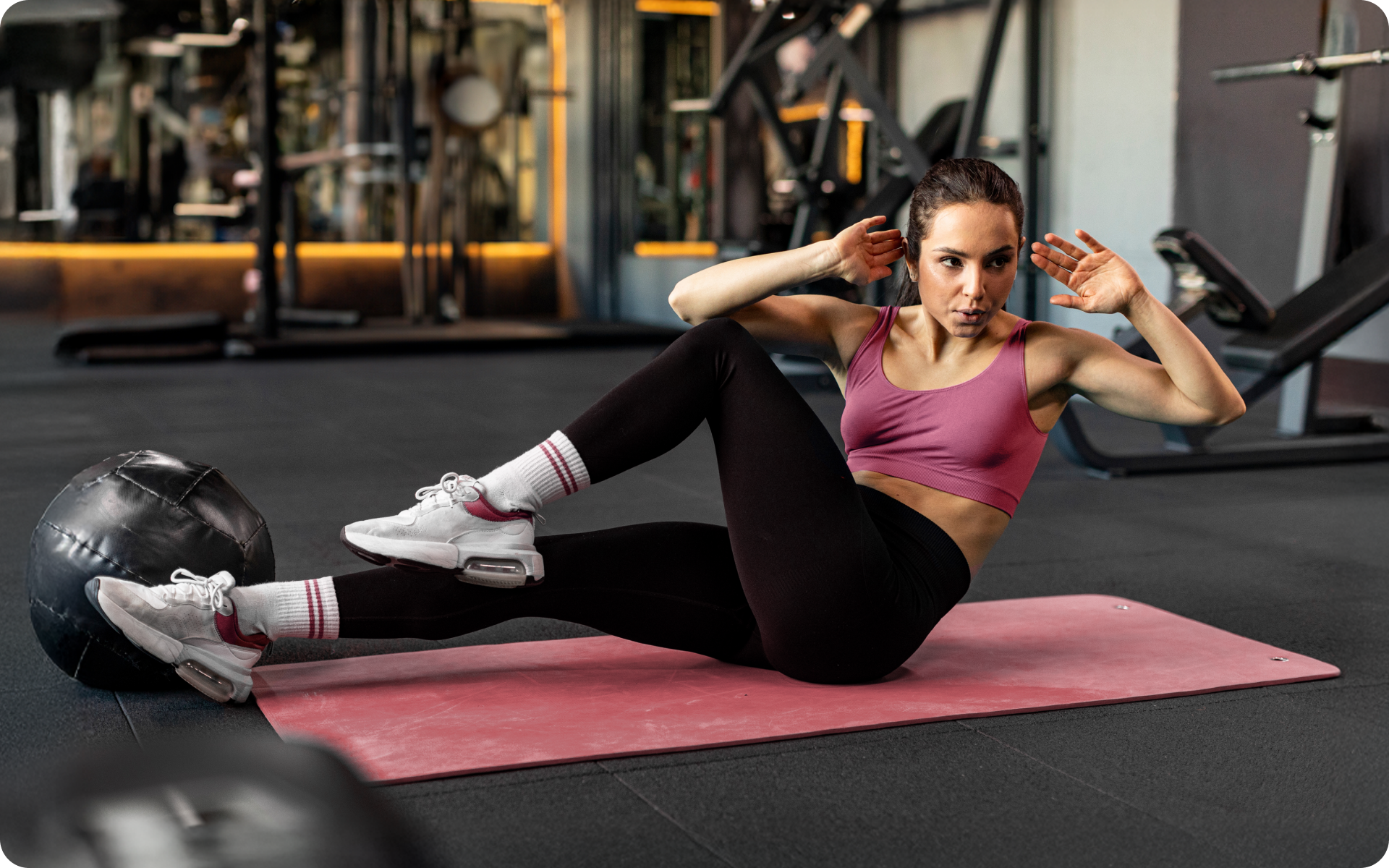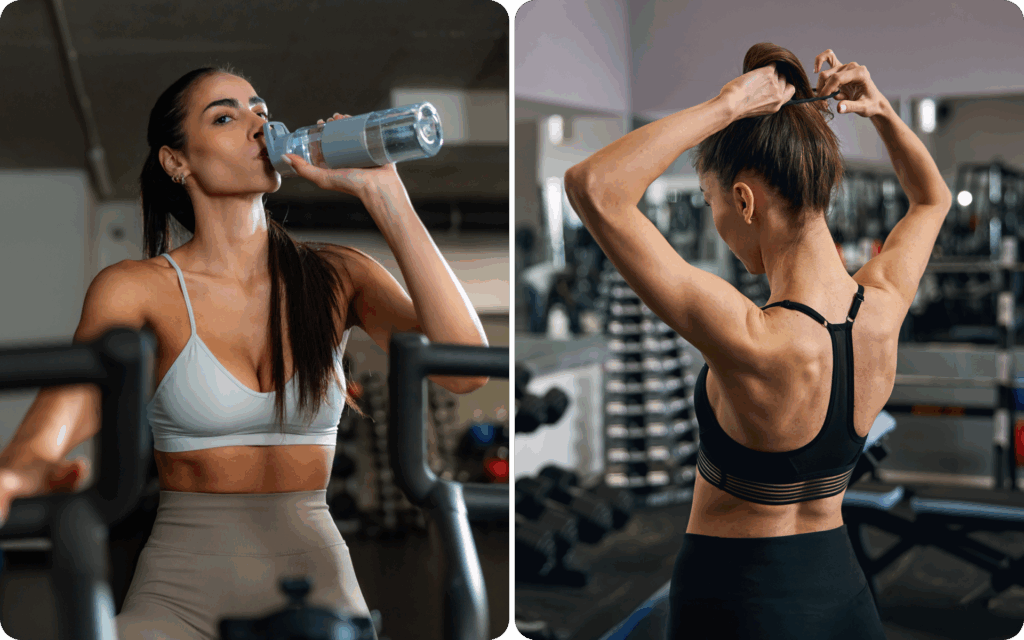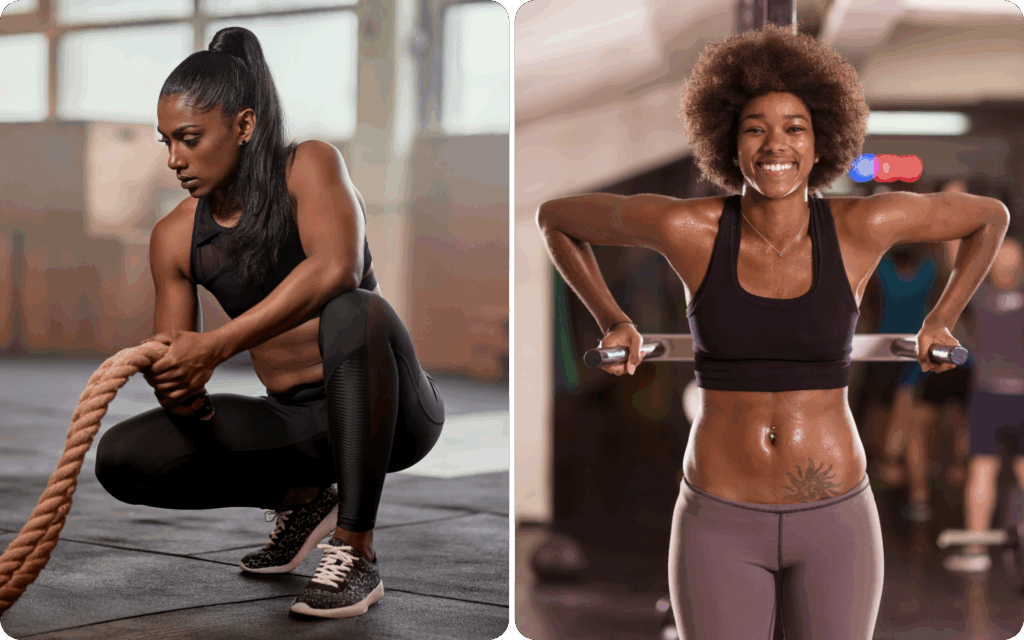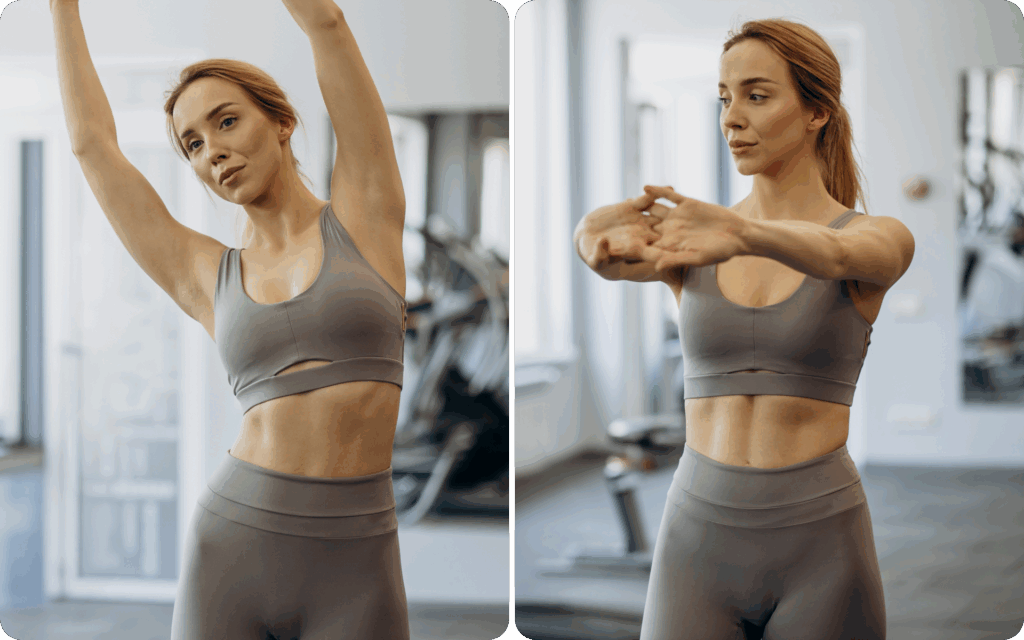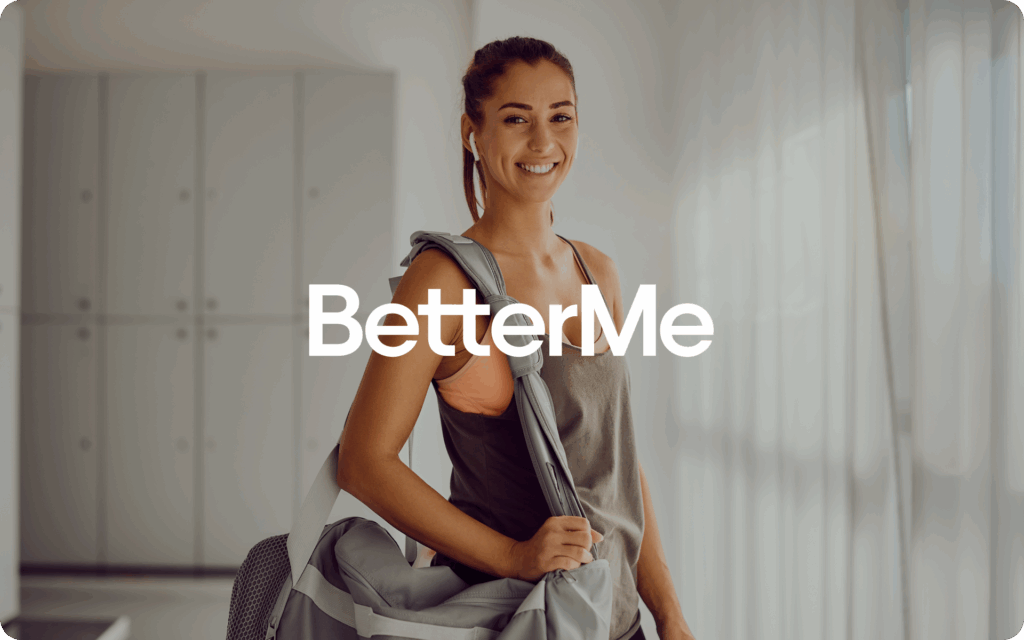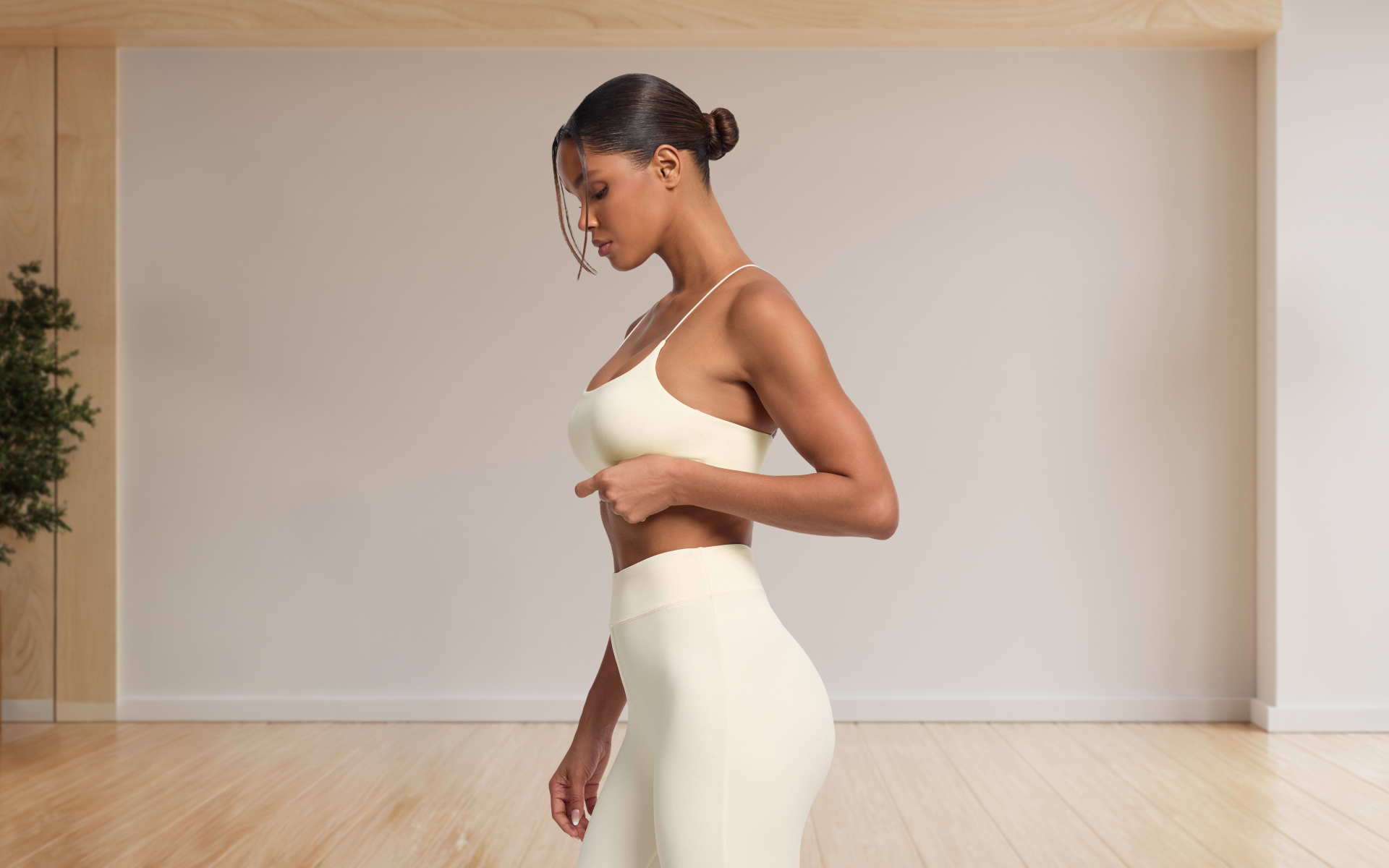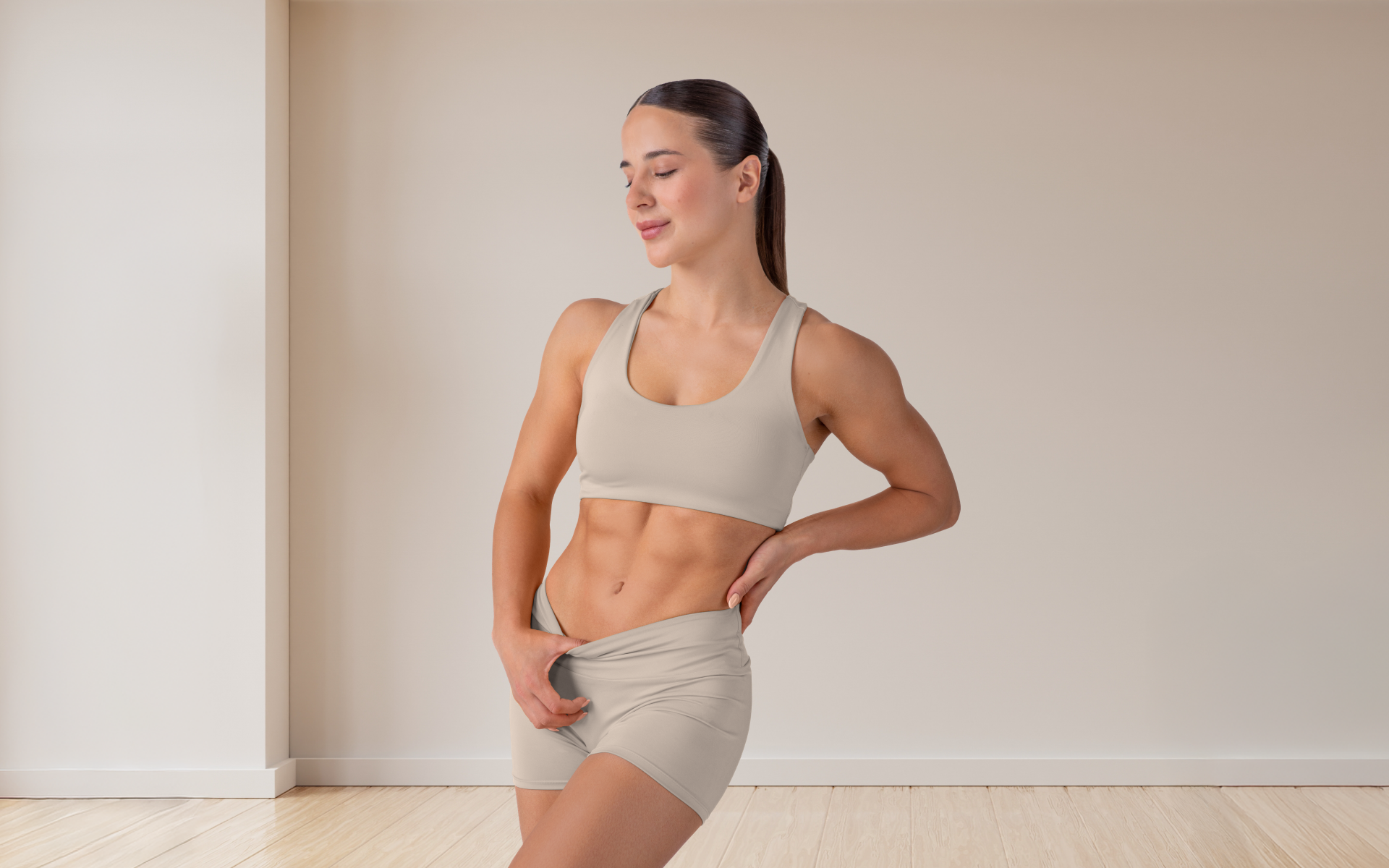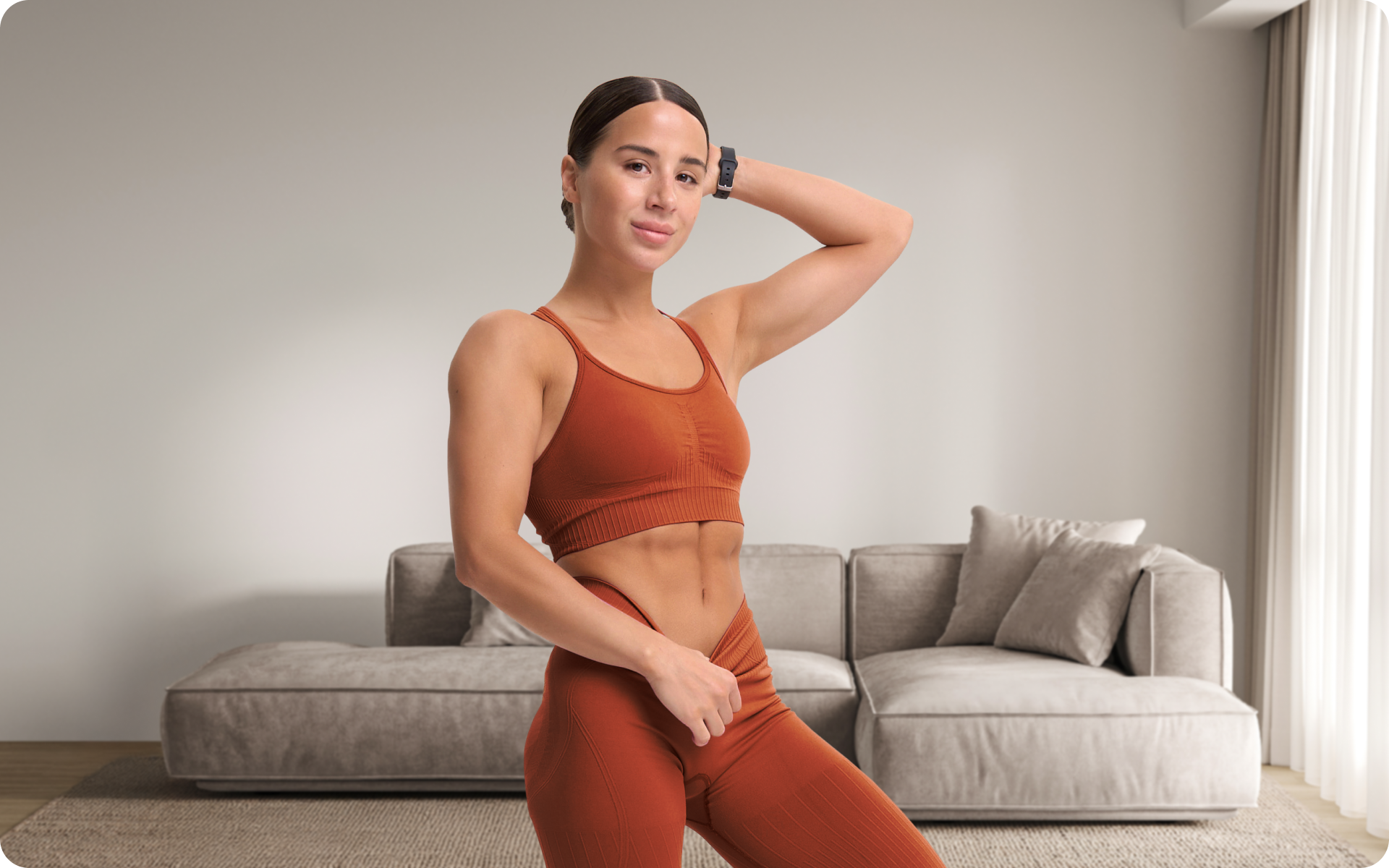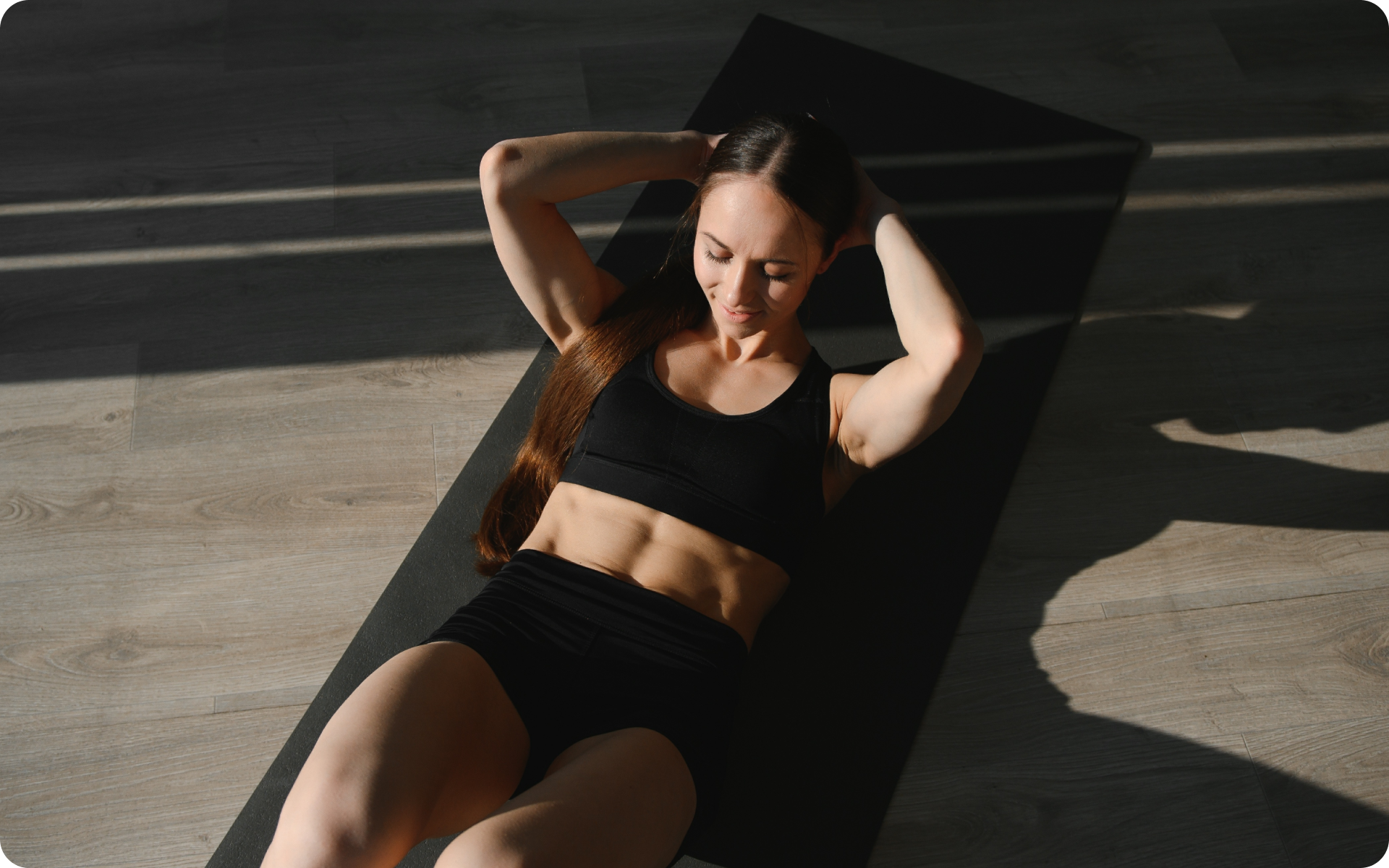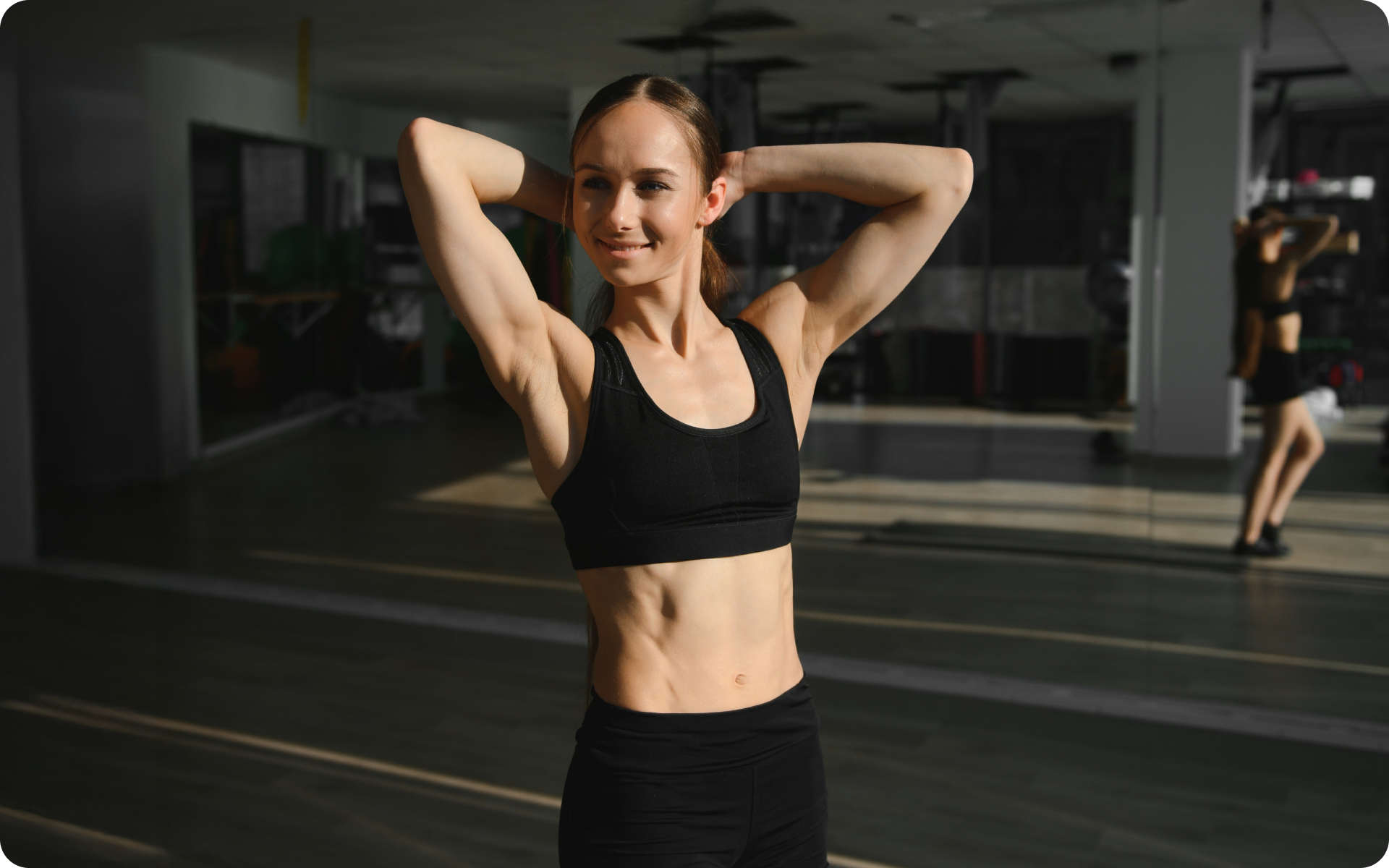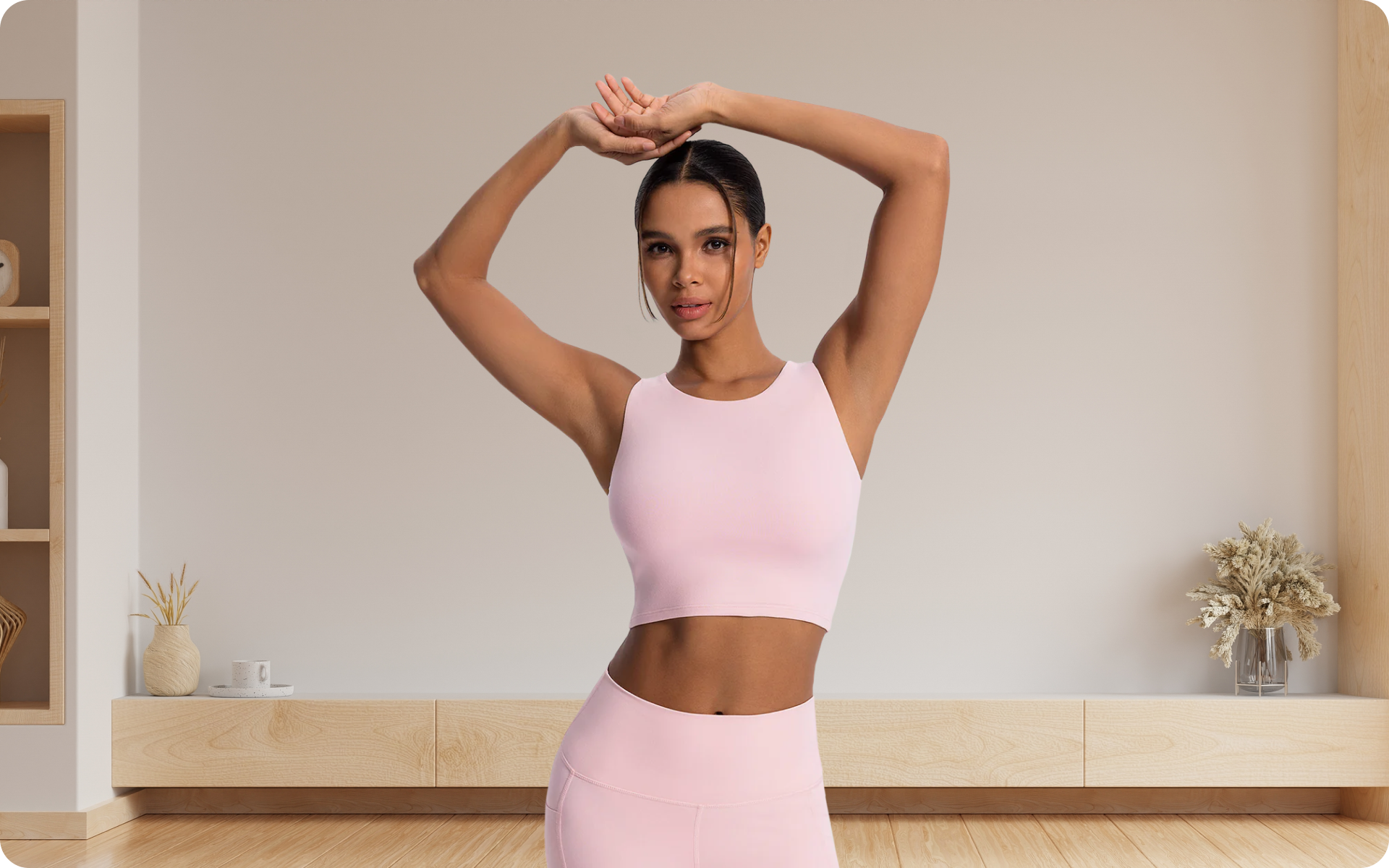Bodyweight exercises are often the go-to choice for exercising the abs.
However, if you want to see some incredible or even faster changes to this part of the body, opting for ab workouts with weights may be a better choice.
Read on to explore the best ab workouts with weights at home or the gym.
What Is A Powerful Way To Do Ab Workouts With Weights?
The most effective way to achieve the best results from ab workouts with weights is to combine several training variables. These include:
- Choosing The Correct Weights
When it comes to weightlifting, the weight you choose determines the success of your routine. If you opt for weights that are too light for you, you risk delaying when you can start seeing your gains.
However, if the weights you are using for your ab workouts are too heavy, then you risk injury. Injuries and extreme soreness ultimately interfere with how quickly you’ll achieve your desired goals.
To find the best weights for your routine, the weight set should help you approach failure after completing your desired reps.
Exercise All The Core Muscles: Not Just The Abs
Contrary to common thought, the abs do not make up the entire core.
They are simply the most visible, aesthetically pleasing, and well-known muscles in this area.
Your core comprises 5 core muscles, namely the (1, 2):
- Rectus Abdominis: Aka the abs or ‘six-pack muscles.’ They run straight down from the ribs to the pubic bone. They help provide stability to the spine while also allowing it to flex.
- Obliques: The internal and external obliques run down the side of the body from the ribs to the hips. The internal obliques lie right under the external obliques. Both pairs of muscles help rotate the spine and allow you to bend from side to side. When contracted isometrically, they help stabilize the spine.
- Transversus abdominis: This is the innermost core muscle, acting as a brace or corset that helps support and stabilize the spine and pelvis.
- Lumbar multifidus: Located deep in the lower back, it helps stabilize the spine. People who usually experience low back pain often have a dysfunction in this muscle (3).
- Erector spinae: This muscle runs along either side of the spine and helps extend the trunk, as well as in actions such as standing straight after bending over.
Whether you are training the abs for aesthetics, strength, or performance, the best results will come from training all parts of the whole (all the core muscles), not just the abs.
Whether you’re a workout beast or just a beginner making your first foray into the world of fitness and dieting – BetterMe has a lot to offer to both newbies and experts! Install the app and experience the versatility first-hand!
- Practice Progressive Overload
Progressive overload is a training concept that involves gradually increasing the difficulty of your workouts over time. Placing greater demands on the muscle over time helps your muscles to get stronger and avoids plateaus.
In untrained athletes, this concept can result in significant improvements in muscle mass gain. Ab workouts with weights for beginners can yield significant results if they incorporate this training style into their exercise routines (4).
When doing ab workouts with weights female or ab workout with weights male routines, you can engage in progressive overload in several ways by gradually:
- Increasing the load
- Performing more repetitions
- Increasing the number of sets
Read more: Ab Workout With Dumbbells Female Edition: 4 Must-Have Exercises
Can You Build Abs With Weights?
Yes, you can build abs with weights. Weighted ab workouts are great as they increase resistance in your exercises, which helps:
- Burn more calories: This helps with fat loss. The more fat you lose in the body, the more your muscle gains are visible. Fat loss around the belly area helps make your abs visible.
Check out this article for fat-burning exercises for men that help you lose overall belly fat, making your abs more visible.
- Build muscle: Strength training is the primary exercise intervention for increased muscle mass and strength (5) for good reason. It challenges your muscles by placing tension and stress on them. This stress triggers the anabolic process, meaning bigger, stronger muscles.
Adding weights to the workout challenges your muscles more than bodyweight workouts do. Weighted workouts also offer the opportunity for progressive overload, which, as mentioned above, is a great way to build muscle mass and strength.
Can You Get Abs Just By Lifting Weights?
Yes, you can get abs by lifting weights. Whether you’re lifting weights for full-body workouts or doing targeted core and abdominal workouts with weights, the extra resistance will help grow and sculpt your abs to the desired look.
With that said, lifting weights alone is not enough. If you wish to not only get abs but also maintain the results long-term, here are some things you need to do:
-
Use Proper Form
Using the correct form when working out not only reduces the risk of injury but also helps maximize muscle stimulation. This stimulating effect leads to better muscle growth and strength over time.
Engaging your core during upper body workouts, such as pull-ups, or lower body workouts like deadlifts can even stimulate the core muscles, making them stronger.
-
Do More Cardio
Lifting weights helps with fat loss and muscle growth. Cardio, however, is exceptionally great at enabling fat loss.
Aerobic workouts burn a lot of calories during the workout session.
If you are overweight and have excess fat around the midsection, full-body cardio exercises can help you burn calories and fat. This fat-burning effect will help the ab muscles hidden under the fat layer become more visible.
-
Do More Than Just Ab Workouts
As we previously mentioned, to achieve firm and healthy ab muscles, it’s best to work all the core muscles, not just the rectus abdominis.
This muscle engagement also applies to the rest of the body.
A balanced physique comes from working all muscles in the body. Use targeted core exercises as part of a full-body muscle-strengthening workout that also trains multiple upper and lower body exercises.
Here is a full-body core workout with weights that will help you work out every muscle.
-
Watch Your Diet
Exercise without a proper diet is simply an exercise in futility.
The sayings ‘abs are made in the kitchen’ and ‘abs are 80% diet and 20% exercise’ are not just fun things that people in the fitness world like to say. They hold a lot of truth because you cannot out-exercise a bad diet.
Thus, if you wish to have abs, your diet must also be on point. If you have excess fat in the abdominal area, maintaining a calorie deficit will promote fat loss.
Also, remember that muscles require protein to grow bigger and stronger.
If you are training for muscle hypertrophy, researchers recommend increasing your daily protein intake to between 1.2 and 1.6 grams per kilogram of body weight per day for optimal results (6, 7).
What Exercises Hit The Abs The Most?
If you’d like to target the rectus abdominis, here are some of the best exercises to incorporate into your routine.
Weighted Elbow Planks (aka forearm planks)
- Wear a weighted vest and lie on the floor, placing your forearms directly under your shoulders.
- Slowly lift your body off the floor by pressing into your forearms and knees.
- Engage your core by pulling your belly button toward your spine as you raise, and maintain a neutral neck and spine. Remember to keep breathing.
- Tuck your toes under and lift your knees so that your body forms a straight line from the head to the heels. Do not sag your belly to the floor or arch your back.
- Hold this position for 20 to 30 seconds.
You can practice progressive overload by gradually increasing the hold time, using a heavier weighted vest, or having someone place a plate on your upper back.
Cable Crunches
- Attach a rope handle to the high pulley of a cable machine.
- Kneel in front of the machine and hold the rope with both hands, bringing it around your head.
- Keep your knees slightly bent and your hips stationary. This kneeling and holding is the starting position.
- Engage your core and pull the rope down by crunching your torso forward.
- Continue to pull the rope towards your knees, focusing on contracting your abs. Keep your elbows fixed.
- Release the tension and slowly return to the starting position. This crunch and release is one rep.
- Perform the desired number of reps while maintaining control and good form.
Reasons why BetterMe is a safe bet: a wide range of calorie-blasting workouts, finger-licking recipes, 24/7 support, challenges that’ll keep you on your best game, and that just scratches the surface! Start using our app and watch the magic happen.
Weighted Scissor Flutter Kicks
This exercise is perfect for the lower abs. Use ankle weights to add resistance.
- Lie on your back on an exercise mat with your legs extended in front of you.
- Place your arms on the mat, palms down, or place them under your buttocks for extra support during the movement.
- Engage your core and lift your feet about 12 inches off the floor.
- Keeping the core engaged and neck relaxed, slowly lower one leg toward the floor as you lift the other leg. This movement should imitate a scissors and kicking movement.
- Continue scissor kicking for 20-30 seconds. These seconds equal one set.
- Perform three sets of 20-30 seconds each for a complete workout.
Loaded Hollow Hold
While not necessarily beginner-friendly, it is one of those intermediate to advanced core exercises that challenge the abs for great results.
- Start by lying down on the floor with your legs extended straight out. Hold an appropriately sized plate or a dumbbell in your hands.
- Engage your core and drive your lower back into the ground. There should be no room between the lower back and the floor.
- While keeping your abs contracted and lower back in contact with the floor, raise your legs 2-3 inches above the floor.
- Raise your head slightly off the floor (1-2 inches) and extend your arms and weight of choice overhead and behind you. Ensure you are pressing your lower back into the floor.
- Hold this position for 30 seconds (or as long as possible) before lowering the legs and shoulders to the floor.
You can perform this workout without weights, but if you want a challenge for your ab workouts, using the appropriately sized plate or dumbbell will help you do just that.
Weighted Hanging Leg Raises
Also known as the captain’s chair exercise, it’s great for targeting both the abs and hip flexors.
- Secure a weight, e.g., a dumbbell or a weight plate, between your feet. Always start with a lighter weight and gradually increase it as you become more comfortable with the exercise.
- If using the captain’s chair frame, place your forearms on the padded armrests and hold on to the armrests. If you are using a pull-up bar, hold the bar and hang from it.
- Inhale and engage your abdominal muscles to prepare for leg lifts.
- Bend your knees slightly and raise your legs upward until your quads are parallel to the ground. Hold for 2 seconds.
- On an exhale, slowly lower your legs in a controlled movement until you return to the starting position. Keep breathing and your core engaged throughout the movement.
- These steps equal one rep. Do 8-12 reps for 1 set and 3 sets for a complete workout.
Weighted Toe Taps
Toe taps are great Pilates-inspired mat exercises for abs and other core muscles.
This exercise engages the obliques, transverse abdominis, hip flexors, and pelvic floor muscles.
- Lie on your back on an exercise mat with your knees bent while holding a weighted plate or EZ bar.
- Lift both feet off the floor and extend your legs up until your thighs are perpendicular to the floor. Ensure that your legs are touching and bend them slightly at the knees.
- Fully extend your arms upward so that the plate or bar you are holding points at your toes.
- Engage your core muscles and lift your torso off the floor. While closing the distance between your toes and the weight in your hands, try to touch the weight to your toes.
- Slowly lower your torso and arms back to the starting position. Keep your legs in the air.
- Repeat for 10-15 repetitions. Start with 1 set and progress to 3 sets of 10-15 repetitions.
Other workouts to add to this routine include:
- Weighted reverse incline crunch
- Weighted hanging knee tucks
- Weighted GHD situps
- Cable woodchopper
Read more: Killer 30-Minute Ab Workout for Busy People
What Are The Most Powerful Ab Workouts With Weights?
The above-mentioned ab workouts with weights are all powerful exercises for building visible abs. However, they are not the only workouts that you can do.
More powerful ab workouts with weights include:
- Dumbbell crunches
- Torso twists
- Weighted side planks
- Kettlebell dead bug
- Dumbbell side bends
- Weighted flutter kicks
These core exercises help build the abs and other core muscles.
You can also use other weighted workouts that do not directly target the abs but still activate the core muscles.
These compound exercises can still help build your abs and include:
- Loaded carries overhead squats.
- Back Squats
- Deadlifts
- Chin-Ups
These compound movements are excellent core exercises and target the abs more effectively than people realize. The bonus is that compound movements work your entire body!
Is High Reps Or High Weight Better For Abs?
Both options will work for abs.
- If you are working your abs to improve muscle mass and strength, moderate reps (8-12) with heavier weights are more effective.
- Those working their abdominals for improved endurance should instead do higher reps (15+) with lighter weights.
Not necessarily. Both light and heavy weights can help build your abs. However, as mentioned above, your goals can determine if you need to use heavier weights or not. Additionally, increasing your weight can facilitate progressive overload. While there is no scientific study recommending the optimal number of sets for ab growth, your best plan should be to use a wide range of reps in your plan. This wide range of repetition variations includes: This variety will cover the broad spectrum of physiological adaptations and likely lead to optimal results. Yes, it is. Research has consistently shown that multiple sets of exercises are better for muscle growth and strength (8). One study found that performing up to 10 sets of exercise per week per muscle group had the best results in muscle growth (9). No, you cannot. While you may assume that doing so will lead to more muscle gains, the truth is that overworking your muscles prevents them from having enough time to rest, repair, and recover, ultimately leading to overtraining. Overtraining can cause your abdominal muscles to feel heavy and sore, and may even lead to decreased performance in the gym, unexplained fatigue, insomnia, and other issues associated with overtraining syndrome (10). Frequently Asked Questions
Do abs need heavy weights to develop?
How many reps for a 6-pack?
Is 5 sets of abs enough?
Can I hit abs every day?
The Bottom Line
Do not shy away from doing ab workouts with weights, as it is a great way to add resistance to regular core workouts, which ultimately leads to better muscle strength, growth, and body composition in this area.
While doing these exercises, remember to pace yourself and avoid using the heaviest weights, as it’ll increase your risk of injury. Instead, use medium weights that challenge your muscles without causing injuries.
Remember to maintain a calorie deficit, consume more protein, and get sufficient rest to achieve your desired results.
DISCLAIMER:
This article is intended for general informational purposes only and does not serve to address individual circumstances. It is not a substitute for professional advice or help and should not be relied on for making any kind of decision-making. Any action taken as a direct or indirect result of the information in this article is entirely at your own risk and is your sole responsibility.
BetterMe, its content staff, and its medical advisors accept no responsibility for inaccuracies, errors, misstatements, inconsistencies, or omissions and specifically disclaim any liability, loss or risk, personal, professional or otherwise, which may be incurred as a consequence, directly or indirectly, of the use and/or application of any content.
You should always seek the advice of your physician or other qualified health provider with any questions you may have regarding a medical condition or your specific situation. Never disregard professional medical advice or delay seeking it because of BetterMe content. If you suspect or think you may have a medical emergency, call your doctor.
SOURCES:
- Core Muscle Activity during Physical Fitness Exercises: A Systematic Review (2020, pmc.ncbi.nlm.nih.gov)
- Name of core muscles and their functions (n.d., researchgate.net)
- Lumbar Multifidus Dysfunction and Chronic Low Back Pain: Overview, Therapies, and an Update on the Evidence (2025, onlinelibrary.wiley.com)
- Progressive overload without progressing load? The effects of load or repetition progression on muscular adaptations (2022, pmc.ncbi.nlm.nih.gov)
- Maximizing Muscle Hypertrophy: A Systematic Review of Advanced Resistance Training Techniques and Methods (2019, pmc.ncbi.nlm.nih.gov)
- Synergistic Effect of Increased Total Protein Intake and Strength Training on Muscle Strength: A Dose-Response Meta-analysis of Randomized Controlled Trials (2022, sportsmedicine-open.springeropen.com)
- Systematic review and meta-analysis of protein intake to support muscle mass and function in healthy adults (2022, onlinelibrary.wiley.com)
- The Effect of Weekly Set Volume on Strength Gain: A Meta-Analysis (2017, pmc.ncbi.nlm.nih.gov)
- The Resistance Training Dose-Response: Meta-Regressions Exploring the Effects of Weekly Volume and Frequency on Muscle Hypertrophy and Strength Gain (2024, sportrxiv.org)
- Overtraining Syndrome (2012, pmc.ncbi.nlm.nih.gov)
